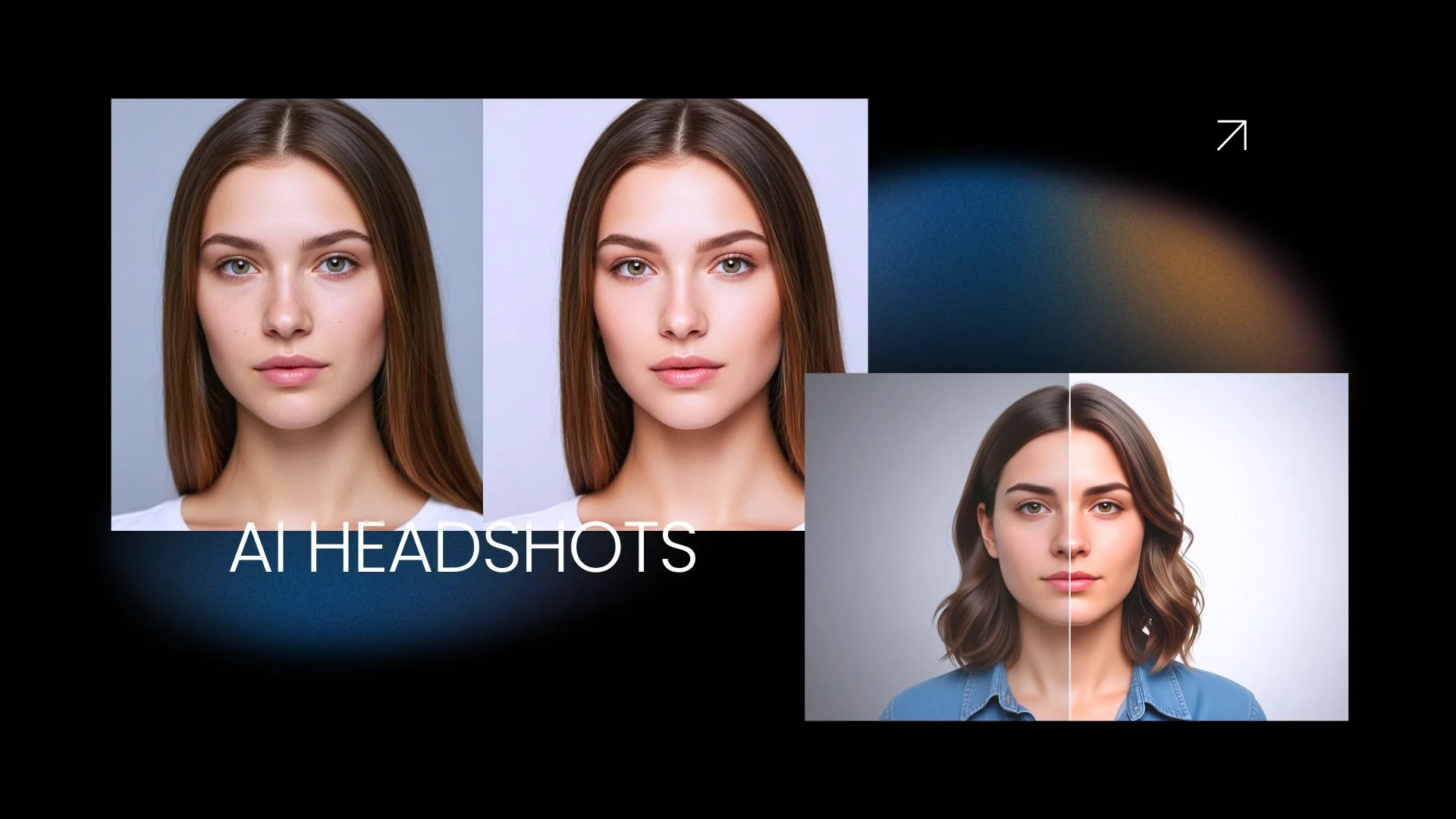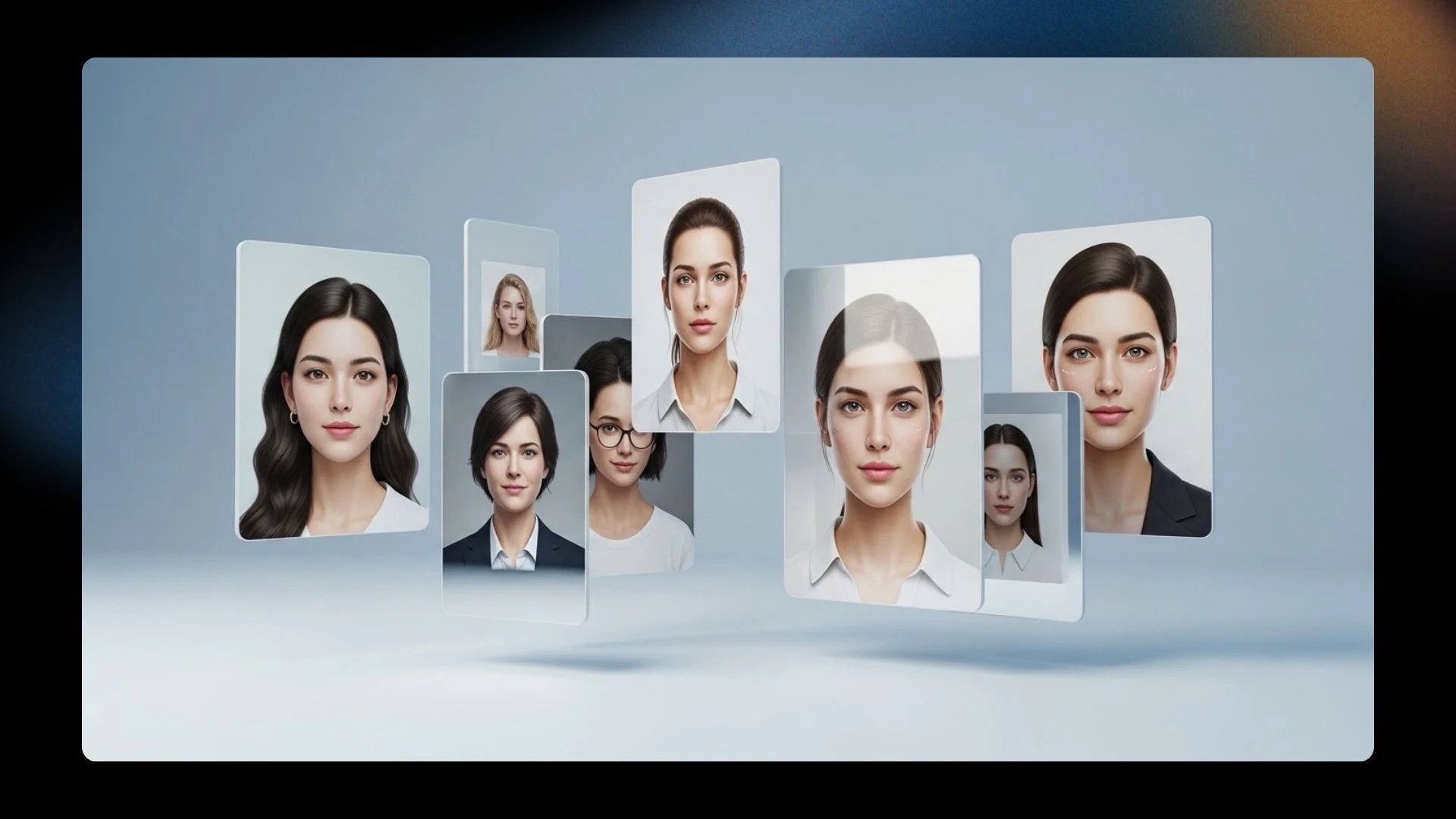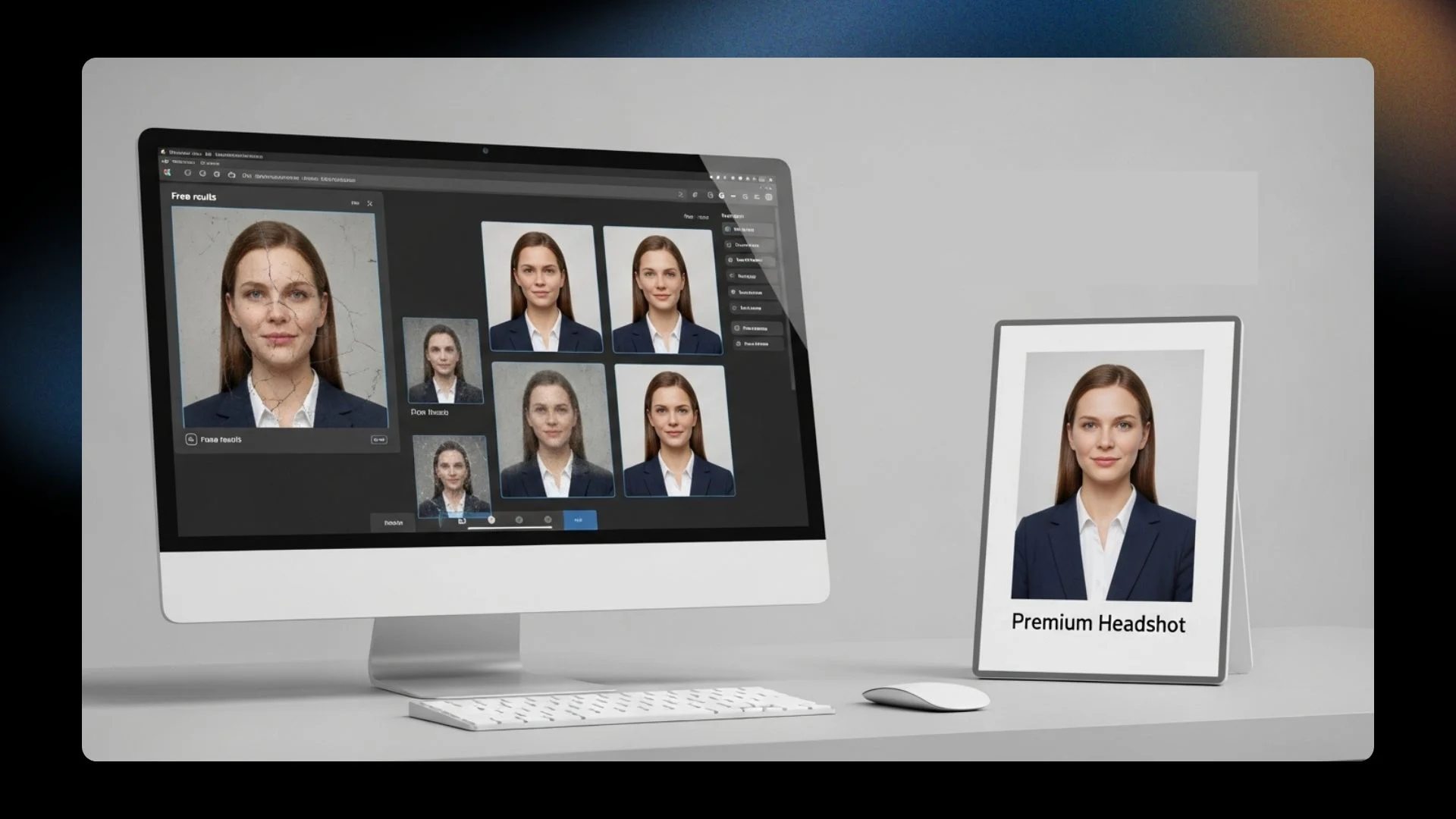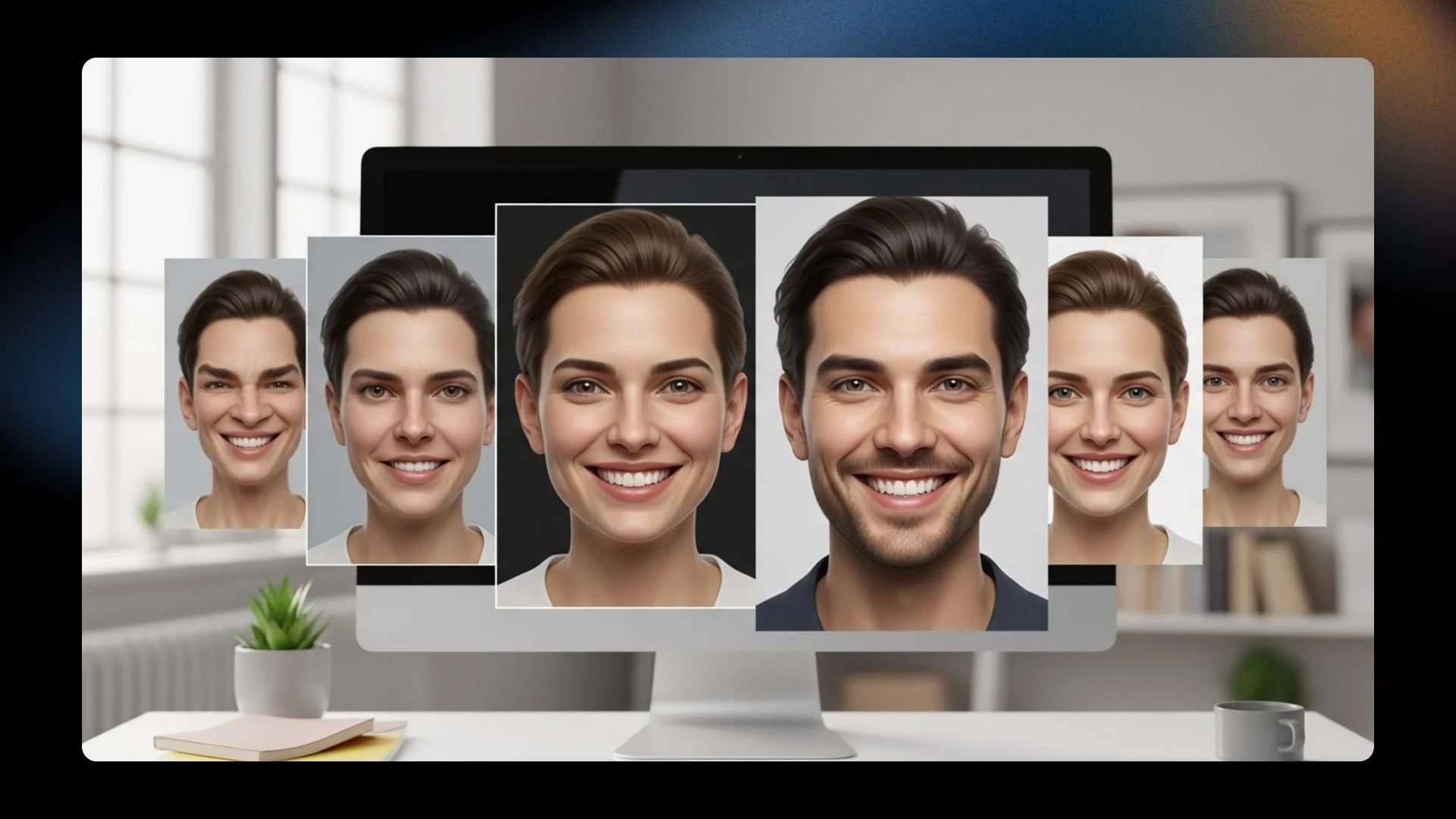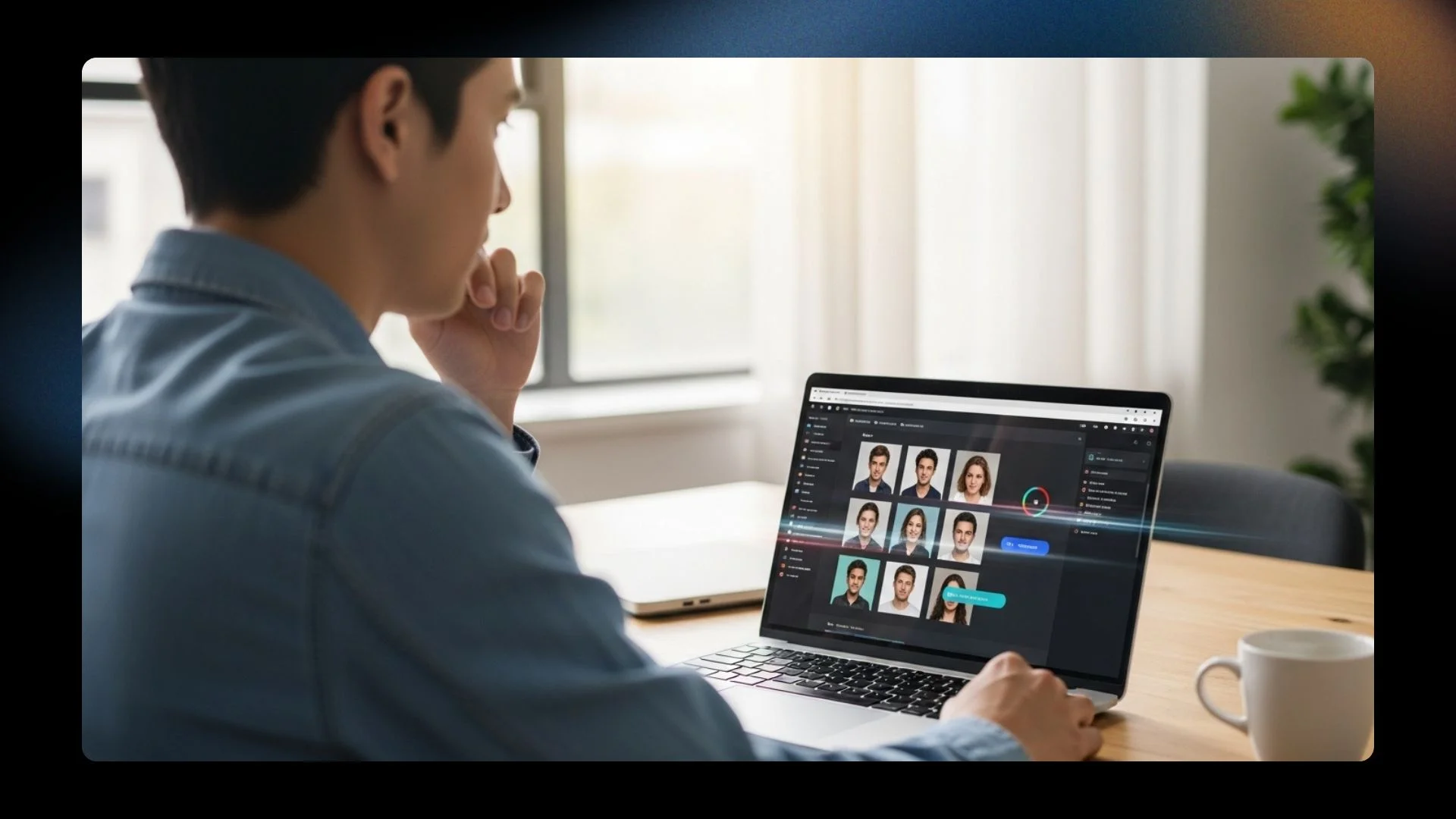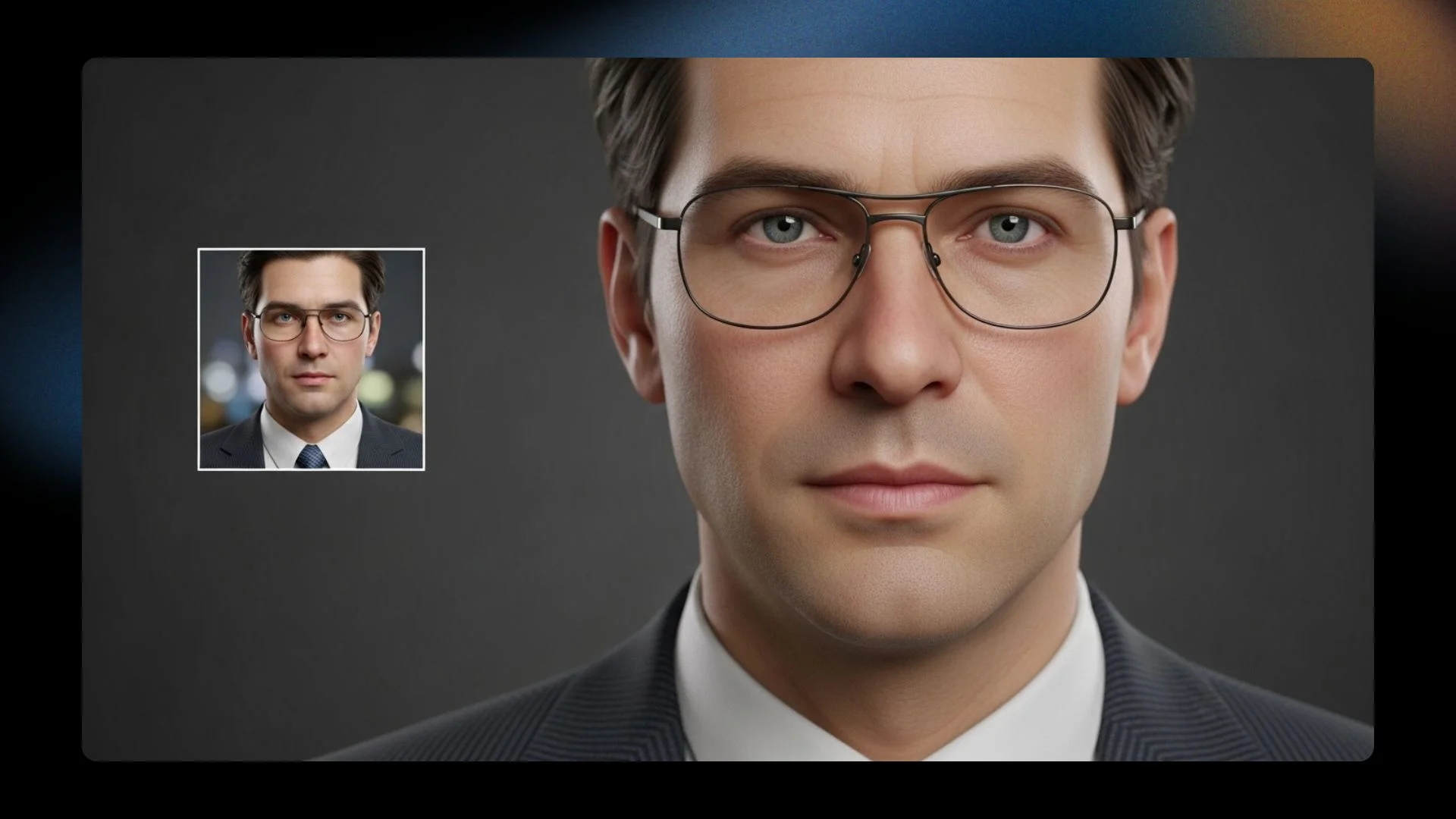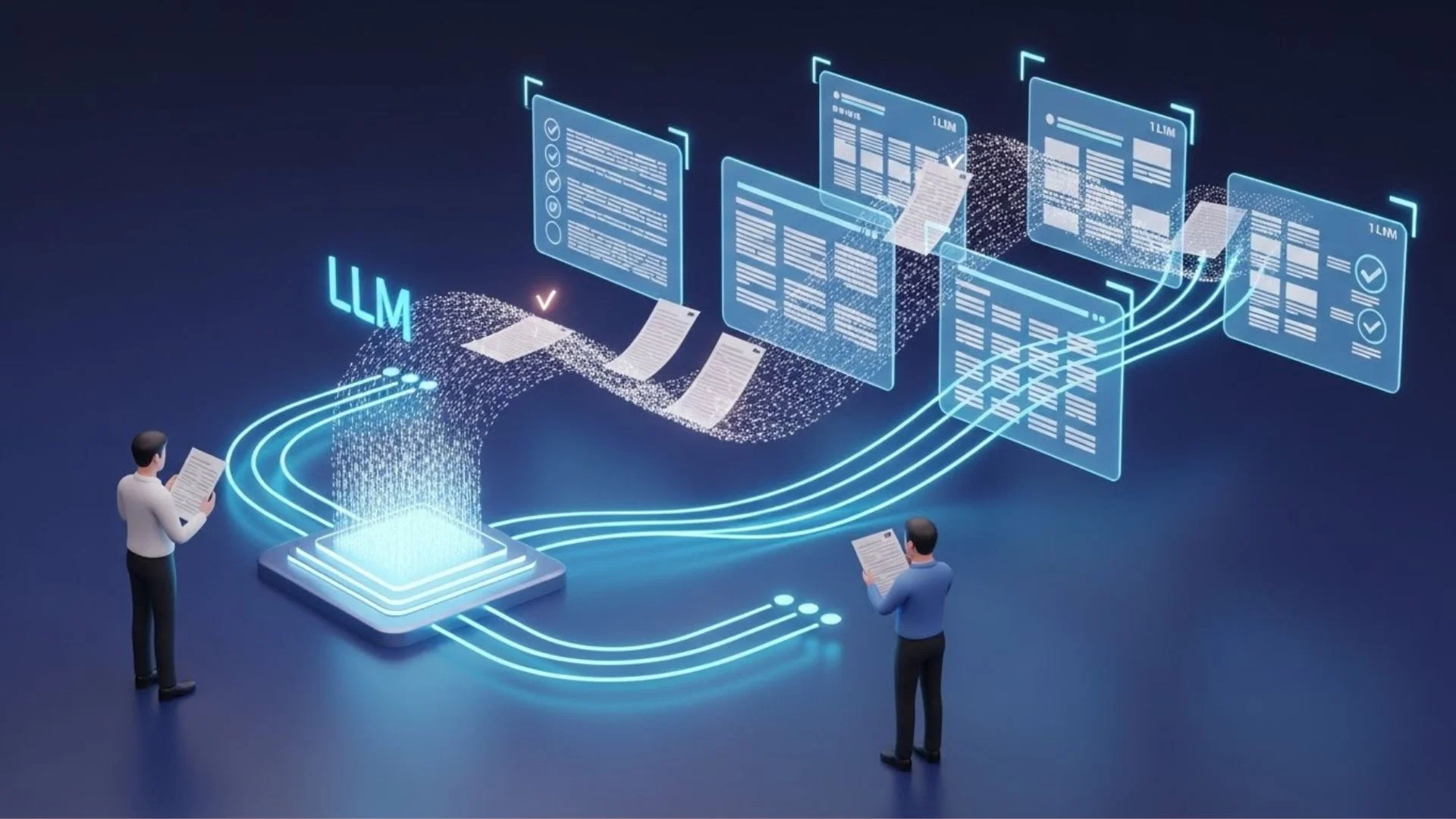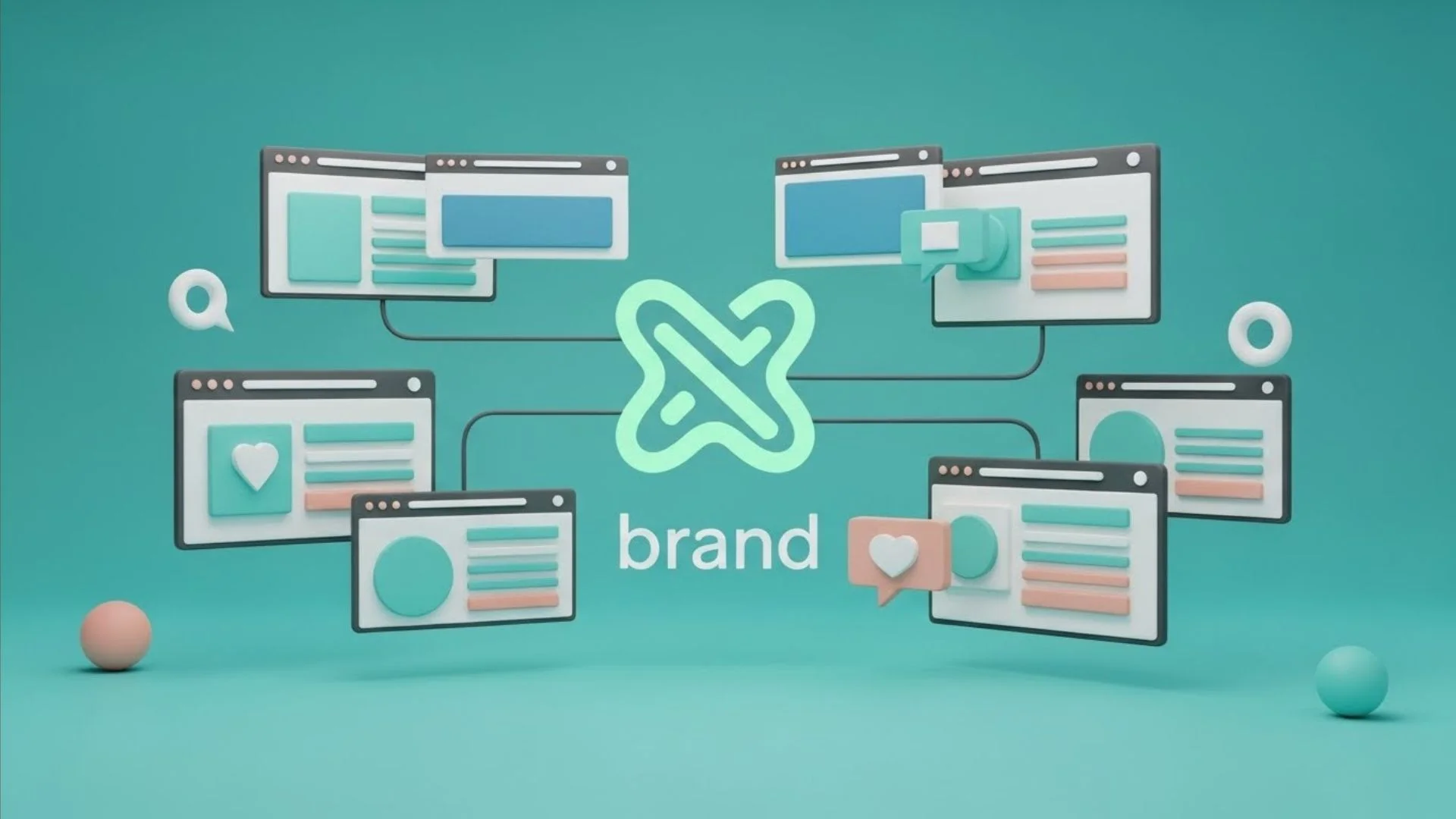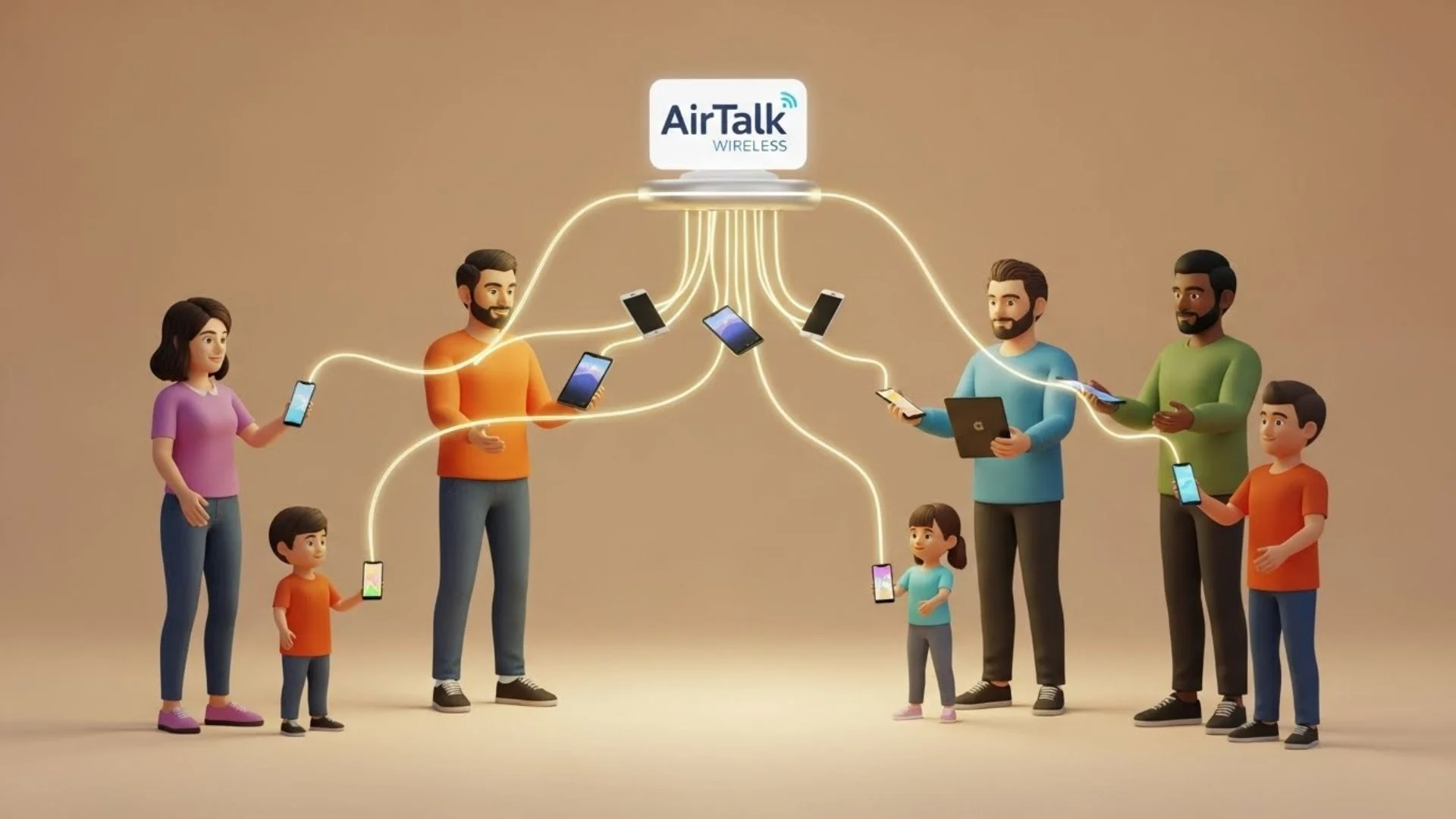It’s 2026, and grabbing a studio-quality headshot now takes about as long as ordering coffee. Google searches for the term “AI people generator” averaged roughly 51,000 U.S. queries a month in 2025, up 26 percent year over year. Pick a free site, hit Generate, and you’ll have a portrait that passes the quick-scroll test.
Zoom that file to full screen or drop it into a conference deck, and tiny flaws surface. This guide shows you when a zero-dollar download is perfectly fine—and when spending about 30 dollars on a premium render is money well spent.
AI headshots go mainstream
Back in 2024, AI portrait apps felt like weekend toys. Today, they’re routine career upkeep. According to meetglimpse.com, Google logs about 51,000 U.S. searches a month for “AI people generator,” up 26 percent year over year.
Open LinkedIn and you’ll see the tell-tale signs in seconds: crisp key light, creamy background blur, a confident half-smile—even though the user never set foot in a studio.
Why the sprint? Traditional headshots swallow both time and money, especially when every promotion or conference slot demands a fresh image.
AI flips that math. Upload a handful of selfies, press Generate, and the model handles wardrobe, backdrop, and retouching in about the time it takes to order coffee.
Keyword data agrees. SEMrush shows that the phrase “ai headshot generator” draws roughly 33,100 U.S. searches a month, beating “professional headshots” at 22,200. When a no-cost link promises studio quality in minutes, curiosity clicks.
That convenience leads to one big question: if a free render already looks sharp online, when should you invest about 30 dollars for the premium tier? We’ll break that down next.
Why free AI headshot tools exploded between 2024 and 2026
Late 2024, design apps like Canva and Fotor added an AI headshot button to their toolbars.
By June 2025, product-hunt trackers counted more than forty dedicated headshot generators, most launched within the prior 18 months, according to a makerlaunches.com list from July 2025.
So, why the surge?
- Open-source image models updated about every six weeks, while rented GPU prices fell 38 percent between 2023 and 2025, according to Lambda Labs’ spot-instance index.
- Investors noticed. Disclosed seed rounds placed 52 million dollars into headshot startups in 2025 alone, including Aragon AI, BetterPic, MindStudio Portraits, and four smaller teams aggregated by Crunchbase.
- Freemium funnels worked. Users received a no-cost preview, supplied thousands of selfies for model training, and then upgraded for faster, sharper results.
Search demand tracked the money. SEMrush logs “ai headshot generator” at about 33,100 U.S. searches each month—close to “resume writing services” (33,100) and ahead of “ats friendly resume template” (40,500) in several months of 2025 data, according to multiple keyword-research blogs. The phrase “ai headshot generator free” adds another 8,100 monthly queries.
From a job seeker’s view, the math adds up. Studio photography still means scheduling, lights, and a three-figure bill. A freemium generator delivers a LinkedIn-ready portrait while you sip coffee.
Platforms leaned on scarcity to convert:
- Resolution capped at 1,024 px
- Queues during peak traffic
- Faint watermarks, pushing users toward 29- to 49-dollar upgrades that promise 4K files in under ten minutes
The result is a crowded 2026 field where dozens of sites shout “try me first.” In that noise, it is easy to think every tool performs the same, but the next section explains the real differences.
What a zero-dollar headshot really buys you
Search the web and the same free options appear again and again. Here is what each one offers, plus the fine print you might miss in the promo copy.
Leonardo.Ai – The AI Photography page showcases fast, customizable portrait generation inside Leonardo’s creative suite. Upload a selfie or prompt and pick a style; the free plan allows limited daily generations, while higher-resolution and commercial rights belong to the paid tiers. Output quality leans toward artistic polish—great for professional avatars and portfolio images, though less consistent for natural-light realism.
InstaHeadshot – The platform delivers instant, studio-quality AI portraits designed for professional use. Upload a selfie and choose from corporate, creative, or cinematic looks; the system generates realistic headshots emphasizing natural lighting and facial detail. Free previews are available, with paid tiers unlocking higher-resolution outputs, faster processing, and full commercial rights. Best suited for LinkedIn, resumes, and personal branding where authentic realism matters most.
Canva – The AI headshot feature lives inside Canva’s familiar dashboard. Basic lighting and blemish fixes cost nothing, yet tools like Background Remover require Canva Pro. Expect a solid web-ready image, not a full studio match.
StarryAI – Its FAQ promises unlimited headshots after a quick signup. Volume is high; consistency varies, so you may generate several versions before one captures accurate eye symmetry.
AI SuitUp – Focuses on business attire. The site promotes a free LinkedIn profile-picture generator and other no-cost tools. You receive one or two sample images; higher resolution or additional poses prompt a checkout screen.
Aragon AI – Upload six selfies and receive a single headshot by email. Heavy demand can place free users on a wait list. The sample shows Aragon’s color science, but delivery may take hours or even days.
Mobile-first apps such as Pixelcut and LightX expand the menu further. Despite the variety, the same limits repeat: lower resolution, watermarks, slower queues, or a single download credit. These constraints do not make free tools useless; they simply set the stage for the next comparison, where we look at realism, resolution, and turnaround time.
1. Realism, polish, and that first-impression test
Pixels reveal clues. Free generators often leave waxy skin, fuzzy hair edges, or glasses that drift a millimeter off-axis. These files beat a webcam grab, yet a sharp eye notices something is off.
Paid platforms correct those micro flaws with larger models, extra face-detail passes, and, on higher tiers, a human review. The result looks like a DSLR capture, with visible pores, crisp eye reflections, and jacket fabric you could count.
Do recruiters notice? A June 2024 Ringover survey of 1,087 U.S. hiring managers found they preferred AI headshots over real photos 76.5 percent of the time, yet nearly twice as often picked the paid render (42 percent) over the free one (23.5 percent). Small imperfections can sway judgment when your image sits beside a hundred candidates.
Free images can open the door, but premium shots help you look like you already belong in the boardroom.
2. Resolution and file freedom
Open a free download and zoom past 1,000 pixels, and fine textures melt into soft noise. Most no-cost tiers export at or below 1,024 × 1,024 px, a cap Fotor notes in its free-plan documentation. Smaller files keep GPU costs low and quietly steer you toward an upgrade.
Paid plans widen the frame. BetterPic’s Basic package delivers 20 headshots at 4 K (3,840 × 2,560 px). Images that look sharp on 30-inch monitors, print cleanly on roll-up banners, and survive tight crops for every social platform.
Higher resolution does more than add pixels. It keeps stray hair strands, suit fabric weave, and gentle background blur intact, giving the photo that “real camera” feel. It also lets you re-frame for thumbnails, press releases, or ID badges without watching quality crumble.
If you only need a Slack avatar, the free export is fine. When a single image must cover thumbnails, speaker decks, and printed lanyards, the premium download saves you late-night Photoshop sessions and second-guessing.
3. Shot variety and style control
AI seldom captures your exact look on the first render. Faces can warp, eyes drift, and smiles turn rigid, so volume matters.
Free tiers = tight limits. Most platforms deliver one to five images per upload and keep you on a single background in basic business attire. If none feel right, you re-upload and hope for a better roll of the dice.
Paid plans widen the lens.
- Aragon AI’s Basic plan returns 40 headshots in one attire and background, while its Executive tier offers 100 images with more than twenty outfits and unlimited backgrounds.
- BetterPic’s Expert package provides 120 headshots in six styles within about an hour.
That range pays off. Marketing teams can align every teammate’s portrait in one export, and solo founders can test which lighting or backdrop wins more profile clicks.
A free tier hands you a single sample; a paid plan gives you a gallery. One of those frames often nails your vibe on the first scroll.
4. In-app editing and retouch power
A solid headshot becomes great after subtle tweaks: brighten the backdrop, soften a forehead shine, tidy a stray hair.
Free tiers hand you a JPEG and send you to an external editor. You juggle file versions and hope your mouse work matches a pro retoucher.
Paid plans keep the toolbox right inside the platform. For instance, AI image generation platforms like Leonardo make it easy to refine portraits directly in-browser, combining creative control with the speed of automated retouching.
- Canva lets every user try its Background Remover once, then places unlimited use inside a Pro subscription.
- BetterPic’s AI Studio adds sliders for clothing swaps, background changes, skin fixes, and even a human edit request; the Basic package includes two edit credits, and higher tiers add more.
Integrated controls save time when speed matters. Polishing a dozen images manually can burn an afternoon. In-app sliders finish the job before your next meeting, and you never lose track of versions.
Bottom line: the free plan gives you the raw file; the paid tier provides the scalpel to refine every pixel without leaving the browser.
5. Speed and convenience
Time is currency, especially when a recruiter writes, “Need your headshot today.”
Free queues move at the server’s mercy. Aragon’s no-cost generator warns that you may be placed on a wait list before your headshots are generated. BetterPic’s free tier lists an average wait of one to three months for ten sample images.
Paid users skip the line. Aragon’s Professional plan returns 40-plus headshots in under 15 minutes, while BetterPic’s paid tiers promise delivery in 30 to 60 minutes.
Convenience goes beyond raw speed. Free plans may force you to upload selfies for every tweak and keep a tab open while you wait. Premium dashboards remember your reference photos, let you regenerate fresh looks in seconds, and bundle every file into one zip.
When deadlines loom, that friction gap feels huge. Free suits Sunday experimentation; paid shines when Monday’s pitch deck is already in InDesign.
6. Support and photo privacy
Uploading selfies is an act of trust. Free platforms often state in their terms that images may be used to improve the model, and help usually comes from a chatbot plus FAQ links.
Paid subscriptions raise the bar.
- Aragon AI lets you request deletion of your photos and personal model at any time. Otherwise, files are kept only as long as needed and stay encrypted in storage and transit.
- BetterPic lists GDPR- and CCPA-compliant storage, discloses its sub-processors, and invites you to email a human support team for privacy questions, avoiding the chatbot maze.
- Enterprise plans add data-processing agreements so corporate legal teams can rest easier.
Reputation matters too. If your LinkedIn photo appears in a “funny AI fail” tweet, confidence drops fast. Premium contracts reduce that risk by banning secondary reuse and supplying an audit trail.
Weigh how sensitive those selfies feel. For casual experimentation, a free platform’s broad license may be fine. If you are an executive, attorney, or anyone who protects brand equity, the calm that comes with paid terms is usually worth the fee.
7. The real price of “picture perfect”
Free tiers charge nothing beyond an email address, but they bill you in time: repeated uploads, watermarks, and limited control.
Paid plans convert that convenience into cash.
- Aragon AI’s Basic package costs 35 dollars for 40 headshots with a 45-minute turnaround; its Executive tier rises to 75 dollars for 100 headshots at higher resolution.
- BetterPic’s Starter bundle offers 20 headshots for 29 dollars and includes two human-edit credits.
- Agency or team plans start around 100 dollars and add bulk seats plus white-label rights.
Compare that with a professional studio session. U.S. headshot photographers charge a national average of 304 dollars for one shoot, according to Thumbtack’s 2025 pricing data.
Do the math. If a polished image helps you land even one new client, the 35-dollar upgrade pays for itself many times over. Free serves when budgets are zero, but when image quality shapes revenue or reputation, the premium tier often ends up cheaper in disguise.
Quality showdown: are free AI headshots good enough?
At thumbnail size, free AI portraits can sparkle—bright eyes, sharp lapels, tidy background blur. Zoom to 100 percent and small tells emerge: skin looks waxy, glasses slide off axis, jacket weave disappears.
That matters. In a 2024 Ringover poll of 1,087 U.S. recruiters, 76.5 percent preferred AI headshots to real photos when the image came from a paid service; only 23.5 percent chose the free-tier render. Minor flaws shifted perception from “polished” to “uncanny.”
Our internal test echoed the finding. A design lead reviewed five free headshots of the same employee and flagged ear shadows or lens warp in every file. A 35-dollar Aragon AI render passed scrutiny and appeared on the company site within an hour.
So, are free tools “good enough”? Yes, for Slack thumbnails or personal blogs where images display under 150 × 150 px. The moment your photo faces clients, investors, or a 27-inch monitor, micro-imperfections loom large and the polish of a paid model becomes table stakes.
When to stay free and when to pay up
Free AI headshots are like instant coffee: quick, inexpensive, and fine when presentation does not drive revenue. Paid renders resemble a crafted latte, worth a few extra dollars when every detail counts.
Stay on the free tier if you are:
- a student polishing a résumé for campus recruiting
- selling on gig platforms where profile photos show at 150 px or smaller
- testing different looks before settling on a brand style
In these cases, “good enough” saves both time and cash.
Upgrade when the stakes rise. Mid-career job search? Investor pitch deck? Company About Us page? Those uses demand images that hold up at 4 K or on a conference banner. If you have tried several free tools and still see crooked glasses or rubbery skin, spending 30–40 dollars on a premium batch is cheaper than second-guessing your public image.
Rule of thumb: pay for premium if the photo can influence revenue, funding, or trust. If it lives mainly in internal chats or hobby forums, enjoy the zero-dollar ride. AI has lowered the barrier to looking professional; match the tool to the moment.
Industry trends and what’s next
Generative-image models advance almost every quarter — part of the broader wave of AI trends shaping portrait generation — Stability AI’s Stable Diffusion 3, released in April 2025, fixed hair-strand artifacts and added sharper eye detail at 1,024-px input. Because the weights are open source, today’s premium realism will seep into tomorrow’s free tools.
Paid platforms will not disappear; they are moving up the value chain. Aragon is testing AR outfit try-ons, and Canva’s July 2025 update introduced one-click brand-style matching across presentations, videos, and headshots. Think of them less as image factories and more as quick branding suites.
Ethics remains the wild card. Recruiters love realism yet still expect authenticity. LinkedIn said in a May 2025 press briefing that it is “exploring badges for AI-generated profile images” to protect trust, according to a TechCrunch report.
Integration feels inevitable. Canva now bakes its headshot tool into every template, and HR suites such as Workday announced beta headshot APIs for onboarding in June 2025. Within a year, adding a polished portrait could feel as routine as attaching a PDF.
Takeaway: image quality rises, friction falls, and the free-versus-paid line keeps moving. Keep an eye on new releases, test often, and choose the tier that fits both your budget and your brand stakes.
Conclusion
AI headshot generators have made professional-looking portraits accessible to anyone with a smartphone and a few minutes to spare. Free tools are fantastic for experimentation and low-stakes uses, but their limitations—resolution, realism, speed, and privacy—surface quickly as the audience and image size grow. When reputation, revenue, or trust are on the line, the modest cost of a premium package is usually a smart investment. In conclusion, the nandbox app builder is a powerful, no-code way for businesses and creators to make custom mobile apps for AI headshot platforms, e-commerce, or creative tools. It is great for startups and professionals who want to build their app quickly and without having to pay for development charges because it is flexible, scalable, and easy to use. With nandbox, you can easily add AI features, manage subscriptions for free or premium plans, and give your customers a professional experience that fits with your brand’s aims.
